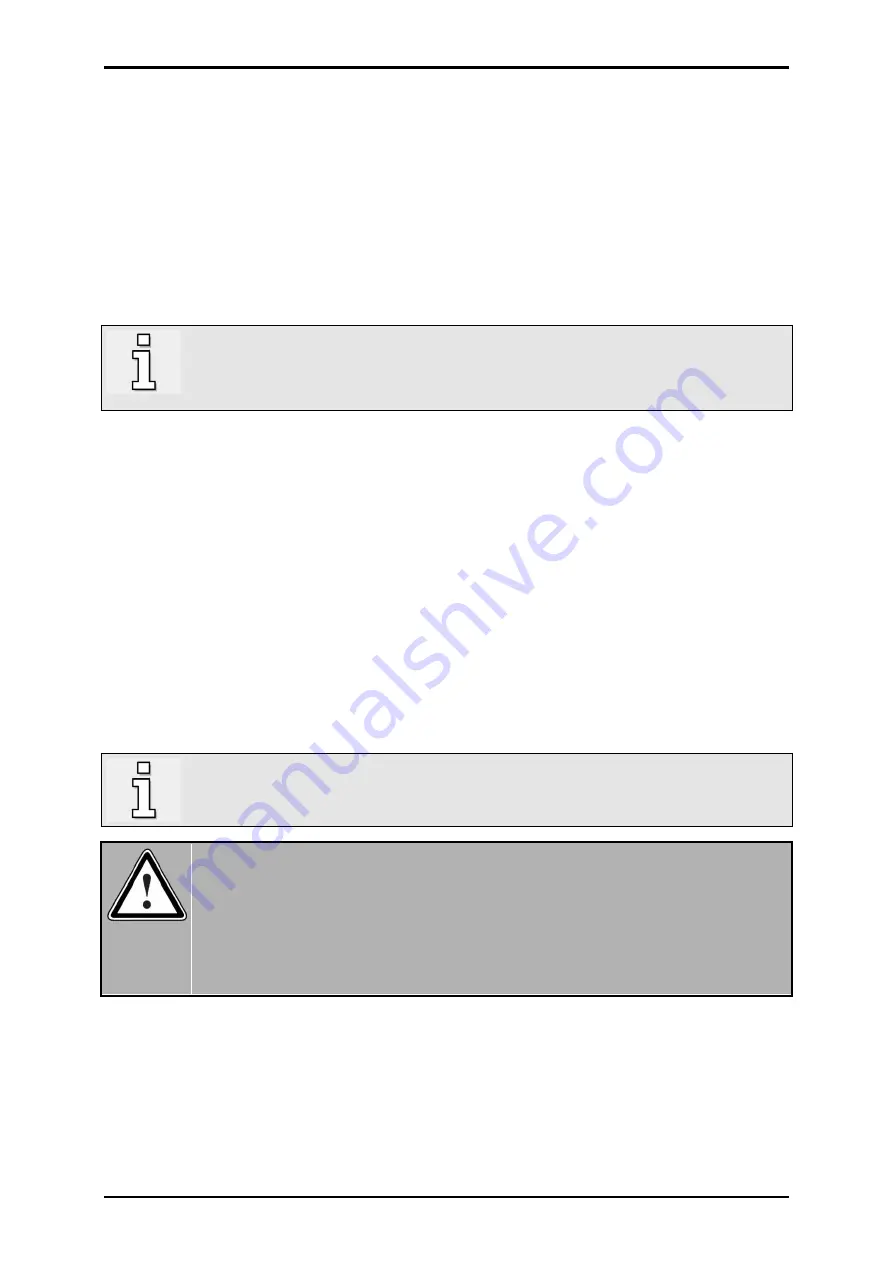
Functional safety technology
Page 59
Product Manual
“Servo drive DIS-2 310/2 FB FS STO“
Version 4.0
6.3
Functionalities in the DIS-2 310/2 FB FS STO basic
device
The following functions in the basic device are not certified in accordance with the EN safety
standards. They are functional extensions and offer additional diagnostic options.
Error messages that are generated by the basic device, e.g. when the discrepancy time is exceeded,
are registered and evaluated by the non-safety-relevant state machine of the servo drive. If the
conditions for an error state are recognised, an error message will be generated. In this case, it cannot
be absolutely guaranteed that the power output stage has been switched off safely.
Note
When error messages are acknowledged, all of the acknowledgeable errors concerning
the functional safety will be acknowledged as well
see
section 10.2.
The servo drive monitors the status of the control inputs STO1 and STO2.
This enables the firmware of the servo drive to detect the request of the STO safety function ("Safe
Torque Off") and various non-safety-oriented functions will be performed:
Detection of the PWM signal block by STO1
Detection of the disconnection of the driver supply for the power semiconductors by STO2
Deactivation of the drive control and also of the actuation of the power semiconductors (PWM)
Deactivation of the actuation of the holding brake
Evaluation of the actuation of the STO inputs (discrepancy time)
Detection of application-related error states
Diagnosis of the hardware by way of a plausibility check of the disconnection paths
Status and error indication via digital outputs, fieldbuses, etc.
Note
The brake is actuated via the non-safety-oriented firmware of the servo drive.
DANGER!
If one of the control inputs STO1 or STO2 is deactivated while the power output stage is
active, the drive will coast down without being braked if the holding brake is not
connected.
This may damage the machine. This is why we recommend connecting a holding brake
to the servo drive.
It is possible to request the safe state while the actuation of the power semiconductors (PWM) is
active.
The safety function requires both signals to have the same status. It is only during a certain transition
period, the so-called "discrepancy time", that unequal signals will be tolerated. If this time is exceeded,
an error message will be triggered, see
section 6.2.3.1






























